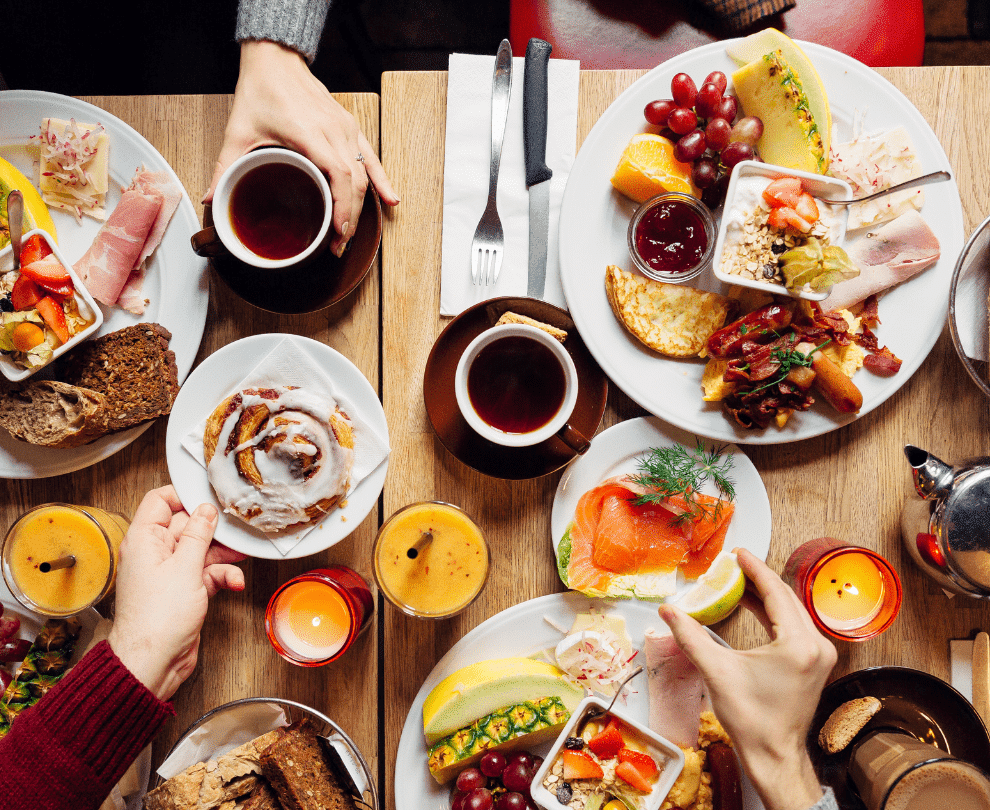Sign up for restaurant insights
Pop-up restaurants have become a popular way for chefs and food-service establishments to attract attention and build brand awareness. These temporary restaurants aren’t limited by traditional locations and menus — they provide an exciting opportunity to serve delicious food to customers, all without the high cost and long-term commitment of a permanent establishment.
For customers, the fun is in the impermanence; they never know when a pop-up will appear and disappear, so it’s the perfect way to create a buzz. In fact, more than 70% of adults say they’d be likely to notice and patronize pop-ups in their area.
When you’re searching for strategies to boost recognition and build a bigger, more engaged audience, a restaurant pop-up could be the ideal solution. But before you start a temporary restaurant, make sure you know what to expect.
What is a pop-up restaurant?
A pop-up restaurant is a temporary dining experience that’s typically operated by a chef or restaurant. Some pop-ups take place in existing restaurants or food trucks, while others happen in non-food-service locations such as parks, museums, bars or bowling alleys. It’s a thrilling idea, especially for foodies and fans of your chef; the event could be an underground ramen cook-off in a parking garage or a fine-dining experience in a historic library.
Restaurants host pop-ups for a variety of reasons — to experiment with new menu items or ingredients, for example, or to gauge customer responses to certain foods or cooking styles. If you’re looking to expand your audience, these short-term restaurants can be a creative way to boost brand awareness and reach new diners. In fact, with the right food, location, and marketing strategies, you can even build community with your pop-up restaurant.
You don’t have to be a restaurateur to participate in this trend. Chefs occasionally use pop-ups in major cities such as New York, Los Angeles, New Orleans or San Francisco to test a new restaurant concept before starting a business or seeking funding.
At Grubhub, we launched a Hot Ones pop-up restaurant available for delivery. This chicken-themed restaurant was created in partnership with First We Feast in honor of their 300th episode of Hot Ones. The menu features diners’ choice of delicious 6-piece or 12-piece wings, in addition to righteously spicy crispy chicken or plant-based chicken sandwiches, coated in sauces tested by A-list stars during the current season of the show.
Even Netflix is getting in on the fun. In 2023, the streaming giant opened Netflix Bites, a pop-up that serves food from acclaimed chefs, including Curtis Stone and Ann Kim.
How long does a restaurant pop-up last? That depends on your goal. If you want to create excitement and increase customer demand, your event might only last for a few hours. To test a new workflow, audience, concept or menu, you might need weeks or months to gather information and tweak operations.
Here’s the good news: Because pop-up restaurants are temporary, they’re inherently flexible. With the proper permits in place, you can prepare your pop-up for the summer in a way that works for your business, employees and customers.
What you need to know before opening a pop-up restaurant
In some ways, learning how to open a pop-up restaurant business is similar to learning how to start a restaurant. Both endeavors require you to:
- Get permits, licenses, and insurance
- Order ingredients
- Set up kitchen and dining areas
- Find food-prep and food-service equipment
Because your pop-up isn’t designed to be permanent, you can get creative with many other aspects of the business. You might change the food menu every night, for example, or stick to a strict tasting menu. Most operations stay with a limited selection of dishes and a drink menu with a few custom cocktails to streamline ordering and food prep.
As you plan, consider different types of pop-up restaurants that work for you and your team. For example, you could plan a pop-up that:
- Raises money for a specific organization or cause
- Centers around a National Food Holiday
- Requires attendees to provide a secret password
- Showcases renowned chefs from one or more restaurants
- Happens in collaboration with a local event
- Celebrates seasonal foods and ingredients
- Offers a cuisine that’s not available anywhere else in the area
- Takes place on the farm that’s providing the ingredients for each of the dishes
- Uses a unique location after-hours, such as the chef’s table in a restaurant kitchen or a museum
- Borrows the format of beloved food programming or competition shows such as Iron Chef, Iron Legend or Drink Masters
No matter what concept you choose, marketing is essential — it builds awareness for the event, creates a sense of urgency and makes customers want to attend. Build a buzz by posting upcoming events on social media and sending email newsletters; if you’re working with another organization or location, ask them to promote the event on their marketing channels. When you need ideas, the Grubhub restaurant marketing guide provides actionable tips for creating goals, choosing the most effective platforms and getting the most from your budget.
Looking to create a sense of exclusivity around your restaurant pop-up? Keep the event “secret” by extending invites in person. Your attendees will feel special, and the word-of-mouth advertising is sure to build a feeling of intrigue and mystery. It’s a great way to build loyalty among regular diners, especially if they have the opportunity to weigh in on new dishes.
Pros and cons of pop-up restaurants
As you determine whether a pop-up restaurant is the right choice for your business, it’s helpful to assess the advantages and disadvantages.
Pros of opening a pop-up restaurant
- No-commitment concept and menu-item testing
- Accommodates incredible chefs from multiple establishments
- Less expensive than a permanent restaurant
- Low overhead and labor requirements
- Location flexibility
- Can last a few hours to a few months
Cons of opening a pop-up restaurant
- Demanding inventory requirements
- Limited or no access to high-end kitchen equipment
- Lack of storage and prep space
- Potential for extra worker training
- Tight profit margins
- Location-based attendance caps
Get your pop-up on people’s radars
If you’re planning to host a restaurant pop-up, awareness is everything. Grubhub can help get your pop-up on the map — connect with more than 33 million diners by joining Grubhub for Restaurants today.




